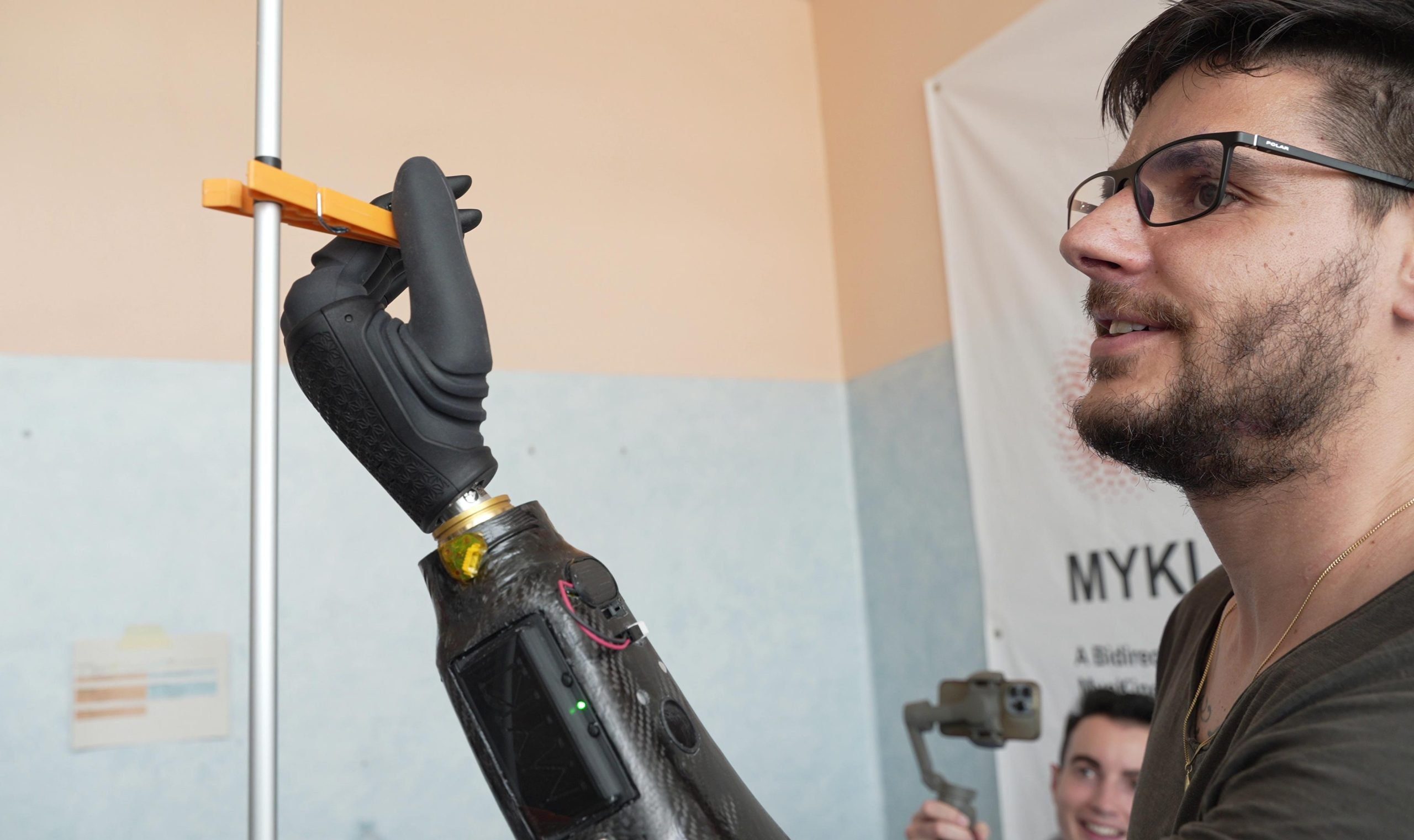
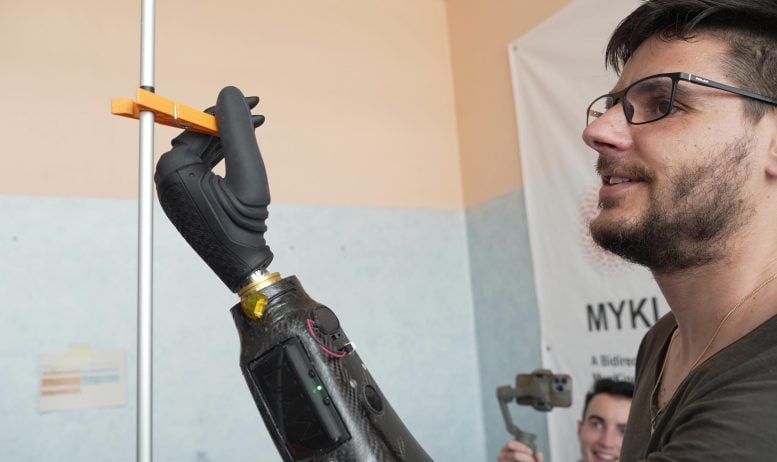
The BioRobotics Institute’s new magnetic prosthetic hand allows for natural, precise control of robotic fingers, demonstrated successfully in a patient trial.
Researchers have developed the first magnetically controlled prosthetic hand that allows amputees to reproduce all hand movements by simply thinking. The revolutionary system requires no wires or electrical connections, relying solely on magnets and muscles to control the movements of the fingers for everyday tasks such as opening jars, shaking a hand, or holding a glass.
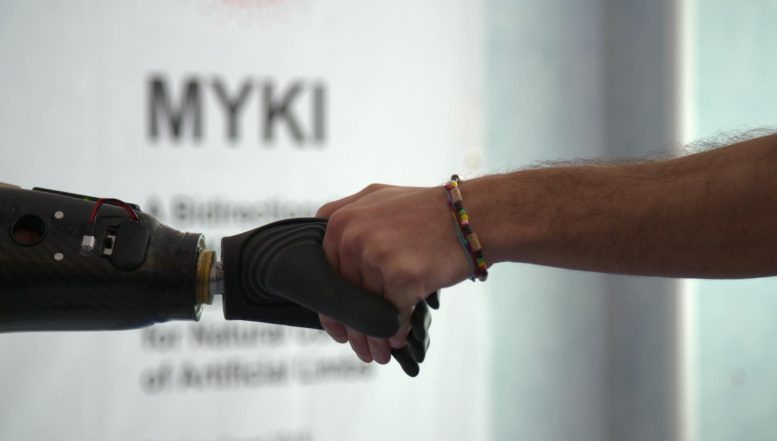
Breakthrough in Prosthetic Interface Development
A team of researchers from the BioRobotics Institute of the Scuola Superiore Sant’Anna in Pisa has developed a radically new interface between the residual arm of the amputee and the robotic hand to decode motor intentions. The system involves implanting small magnets into the muscles of the forearm. The implant, integrated with the Mia-Hand robotic hand developed by the spin-off Prensilia, was successfully tested on the first patient, a 34-year-old Italian named Daniel, who used the prosthesis for six weeks. The results of the trial were presented in the scientific journal Science Robotics and represent a significant step forward for the future of prostheses.
“This result rewards a decades-long research path. We have finally developed a functional prosthesis that meets the needs of a person who has lost a hand,” says Prof. Christian Cipriani from the BioRobotics Institute of the Scuola Superiore Sant’Anna, who led the team.
Documentary on the study published in Science Robotics. Interview with Christian Cipriani, scientific head of the project, Dr. Lorenzo Andreani, Orthopaedics and Traumatology 2 Operative Unit, and the patient. Credit: © 2024 Scuola Superiore Sant’Anna
Myokinetic Control Explored
Myokinetic control is the decoding of motor intentions by means of implantable magnets in the muscles. This is the frontier explored by the research team of the Scuola Superiore Sant’Anna to revolutionize the future of prostheses. The idea behind the new interface, developed as part of the MYKI project, funded by the European Commission through an ERC Starting Grant, is to use small magnets, a few millimeters in size, to be implanted in the residual muscles of the amputated arm and use the movement resulting from contraction to open and close the fingers.
“There are 20 muscles in the forearm and many of them control the hand movements. Many people who have lost a hand keep on feeling it as if it is still in place and the residual muscles move in response to the commands from the brain,” Cipriani explains.
The research team mapped the movements and translated them into signals to guide the fingers of the robotic hand. The magnets have a natural magnetic field that can be easily localized in space. When the muscle contracts, the magnet moves, and a special algorithm translates this change into a specific command for the robotic hand.
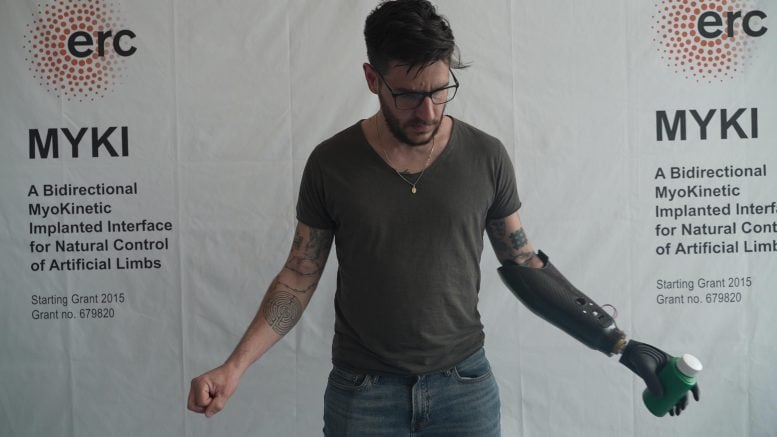
First Human Trial Success
Daniel lost his left hand in September 2022. “I suddenly found myself without a hand: one moment I had it and the next moment it was gone.” He was selected as a volunteer for the study because he still felt the presence of his hand and the residual muscles in his arm responded to his movement intentions.
In April 2023, Daniel underwent surgery to implant magnets in his arm. The surgery was carried out at the Azienda Ospedaliero-Universitaria Pisana (AOUP), thanks to the collaboration of a team coordinated by Dr. Lorenzo Andreani of the Orthopaedics and Traumatology 2 Operative Unit, Dr. Manuela Nicastro of the Anaesthesia and Reanimation Orthopaedics and Burns Centre unit, and Dr. Carmelo Chisari of the Neurorehabilitation unit.
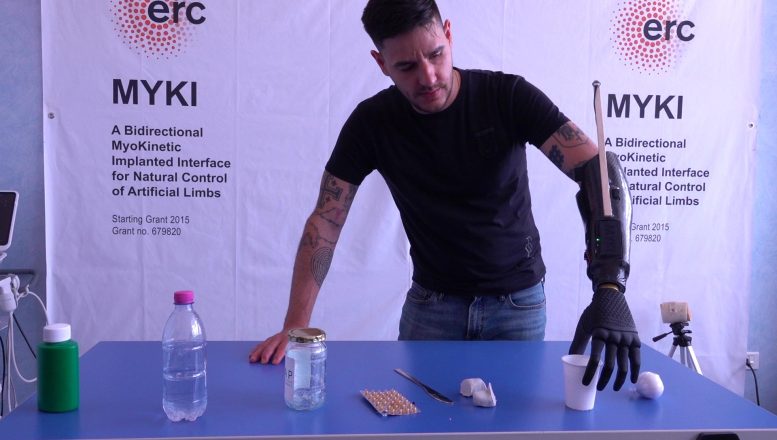
“This is a significant advancement in the field of advanced prosthetic medicine — says Dr. Lorenzo Andreani — The surgery was successful thanks to a careful patient selection process based on strict criteria. One of the most complex challenges was identifying the residual muscles in the amputation area, which were precisely selected using preoperative MRI imaging and electromyography. However, the actual condition of the tissue, due to scarring and fibrosis, required intraoperative adaptation.”
“Despite these difficulties — Andreani continues — we were able to complete the implant and establish the connections—a success that would have been impossible without the collaboration of an exceptional team, whom I would like to thank. Starting with Dr. Manuela Nicastro, head of anesthesia, to the nurses who worked with dedication and professionalism, contributing decisively to the positive outcome of the operation, which represents an important step forward in medical research.”
Six magnets were implanted in Daniel’s arm. For each one, the team of surgeons and doctors located and isolated the muscle, positioned the magnet, and checked that the magnetic field was oriented in the same way.
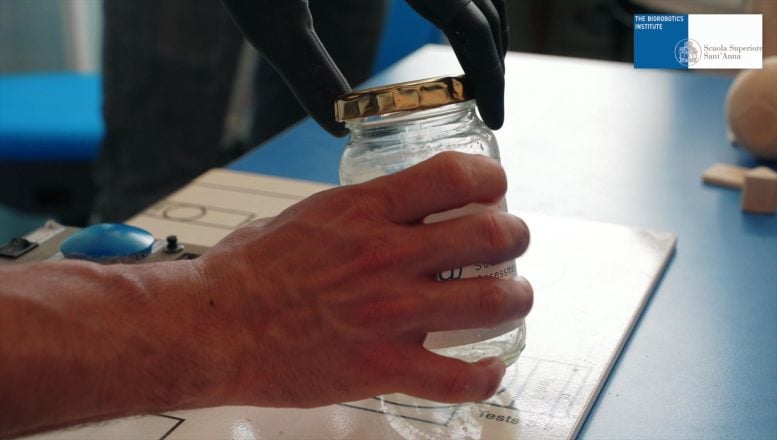
“To make the connection between the residual arm where the magnets were implanted and the robotic hand easier, we made a carbon fiber prosthetic socket containing the electronic system capable of localizing the movement of the magnets,” Cipriani explains.
The results of the experiment went far beyond the most optimistic expectations. Daniel was able to control the movements of his fingers, pick up and move objects of different shapes, and perform classic everyday actions such as opening a jar, using a screwdriver, cutting with a knife, and closing a zip; he was able to control the force when he had to grasp fragile objects.
“This system allowed me to recover lost sensations and emotions: it feels like I’m moving my own hand,” says Daniel.
“To see the work of years of research realized in this study was a great emotion. Working together with Daniel has given us the awareness that we can do a lot to improve his life and the lives of many other people. This is the greatest motivation that drives us to continue our work and to always do better,” explains Marta Gherardini, assistant professor at the Scuola Superiore Sant’Anna and first author of the study.
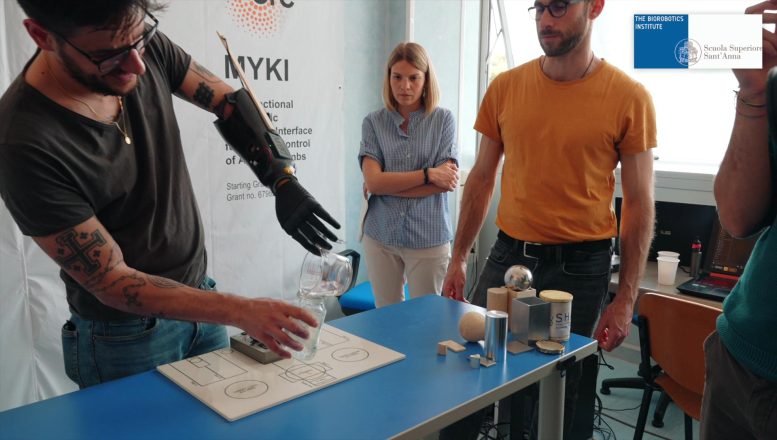
Future Prospects and Impact
“We are ready to extend these results to a broader range of amputations,” Cipriani concludes. “In fact, our work on this new implant is going ahead thanks to European and national funding. Among these, I would like to mention the MYTI project, financed by the European Research Council, which aims at the clinical translation of the interface we have developed; the Fit For Medical Robotics project, financed by the Ministry of University and Research, and all the collaborations we have had for years with INAIL Centro Protesi.”
Reference: “Restoration of grasping in an upper limb amputee using the myokinetic prosthesis with implanted magnets” by Marta Gherardini, Valerio Ianniciello, Federico Masiero, Flavia Paggetti, Daniele D’Accolti, Eliana La Frazia, Olimpia Mani, Stefania Dalise, Katarina Dejanovic, Noemi Fragapane, Luca Maggiani, Edoardo Ipponi, Marco Controzzi, Manuela Nicastro, Carmelo Chisari, Lorenzo Andreani and Christian Cipriani, 11 September 2024, Science Robotics.
DOI: 10.1126/scirobotics.adp3260